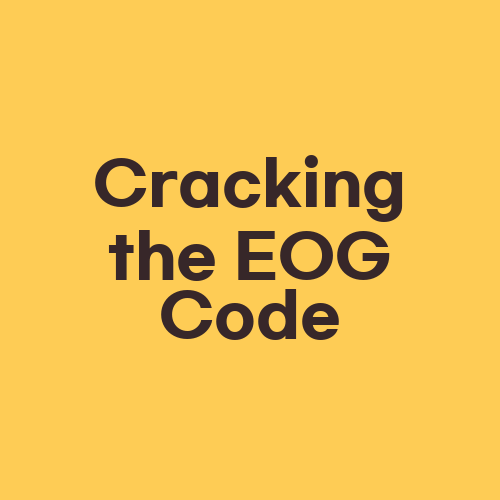Cracking the EOG Code

Cracking the EOG Code: A Simple Configuration Guide for Better SEO Optimization
-
Introduction to EOG
-
Why EOG is Important for SEO
-
Understanding EOG Better
-
Implementing EOG in Your SEO Strategy
-
EOG Best Practices and Tips
-
Conclusion
Are you struggling to improve your website’s visibility in search engine rankings? Look no further – EOG (Easy Optimization Guide) is here to help you unlock the secrets of successful SEO optimization. In this comprehensive guide, we will walk you through the EOG framework and provide you with valuable insights to boost your website’s performance in search engine results. Let’s dive in!
Introduction to EOG
EOG stands for Easy Optimization Guide. It is a user-friendly configuration that helps website owners optimize their content for search engines. By implementing EOG techniques, you can improve your website’s visibility, attract more organic traffic, and ultimately increase your online presence.
Why EOG is Important for SEO
EOG is crucial for SEO because it focuses on optimizing your website in a way that is easy for search engines to understand. By following the EOG framework, you can ensure that your content is properly structured, keywords are strategically placed, and your website is user-friendly. This will ultimately lead to higher search engine rankings and better visibility for your website.
Understanding EOG Better
The EOG framework consists of several key elements that work together to optimize your website for search engines:
- Keyword Research: Identifying relevant keywords that your target audience is searching for.
- On-Page Optimization: Optimizing your website’s content, meta tags, headings, and URL structure.
- Link Building: Acquiring high-quality backlinks to improve your website’s authority.
- Mobile Optimization: Ensuring your website is responsive and mobile-friendly.
By understanding and implementing these elements, you can maximize your website’s potential for higher search engine rankings.
Implementing EOG in Your SEO Strategy
Implementing EOG in your SEO strategy is relatively simple when you follow these steps:
- Conduct thorough keyword research.
- Optimize your website’s on-page elements, including meta tags, headings, and URL structure.
- Build high-quality backlinks from reputable websites.
- Ensure your website is responsive and mobile-friendly.
- Regularly monitor and analyze your website’s performance using SEO tools.
EOG Best Practices and Tips
Here are some additional best practices and tips for implementing EOG effectively:
- Focus on providing valuable and relevant content for your target audience.
- Optimize your website for both desktop and mobile devices.
- Regularly update and refresh your website’s content to keep it current and engaging.
- Monitor your website’s performance using analytics tools and make necessary adjustments.
- Stay up-to-date with the latest SEO trends and algorithm changes.
By following these best practices, you can ensure that your website remains optimized for search engines and stays ahead of the competition.
Conclusion
In conclusion, EOG (Easy Optimization Guide) is a powerful framework that can help you crack the code to successful SEO optimization. By understanding and implementing the EOG principles, you can improve your website’s visibility, attract more organic traffic, and boost your online presence. Start implementing EOG today and watch your website climb the search engine rankings!
Questions and Answers
Q1: What is EOG?
EOG stands for Easy Optimization Guide and it is a user-friendly configuration that helps website owners optimize their content for search engines.
Q2: Why is EOG important for SEO?
EOG is important for SEO because it focuses on optimizing your website in a way that is easy for search engines to understand, leading to higher search engine rankings and better visibility for your website.
Q3: How can I implement EOG in my SEO strategy?
You can implement EOG in your SEO strategy by conducting thorough keyword research, optimizing your website’s on-page elements, building high-quality backlinks, ensuring mobile optimization, and regularly monitoring your website’s performance.
Q4: What are some EOG best practices?
Some EOG best practices include focusing on valuable and relevant content, optimizing for desktop and mobile devices, regularly updating your website’s content, monitoring performance, and staying up-to-date with SEO trends.
Q5: What can I expect by implementing EOG?
By implementing EOG, you can expect improved visibility in search engine rankings, increased organic traffic, and a stronger online presence for your website.





